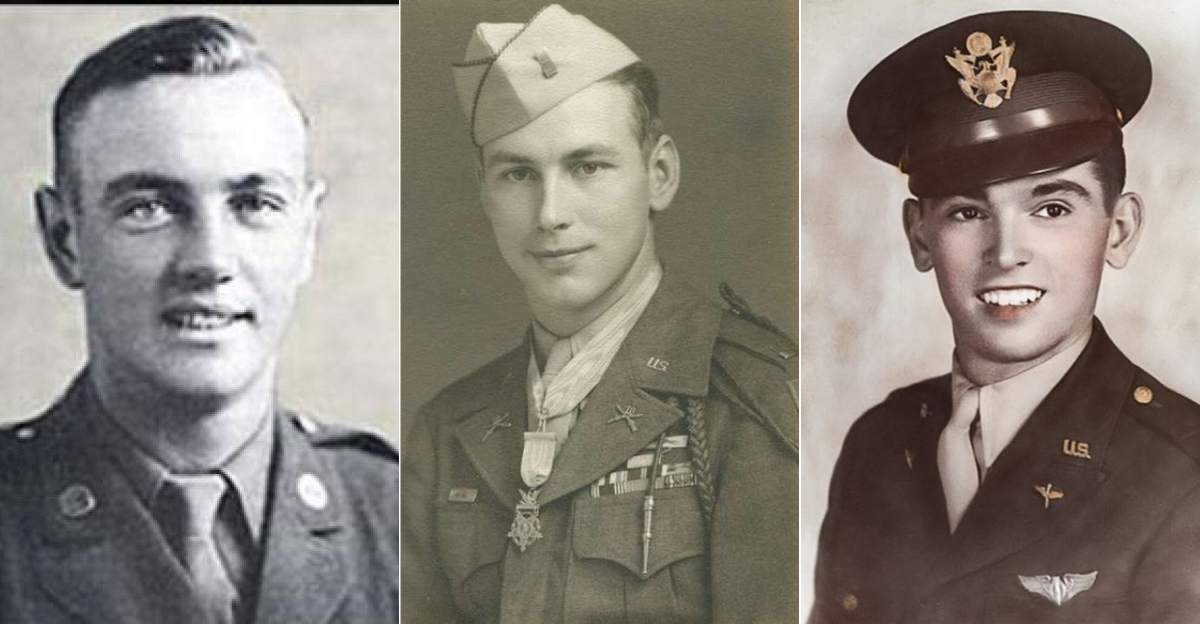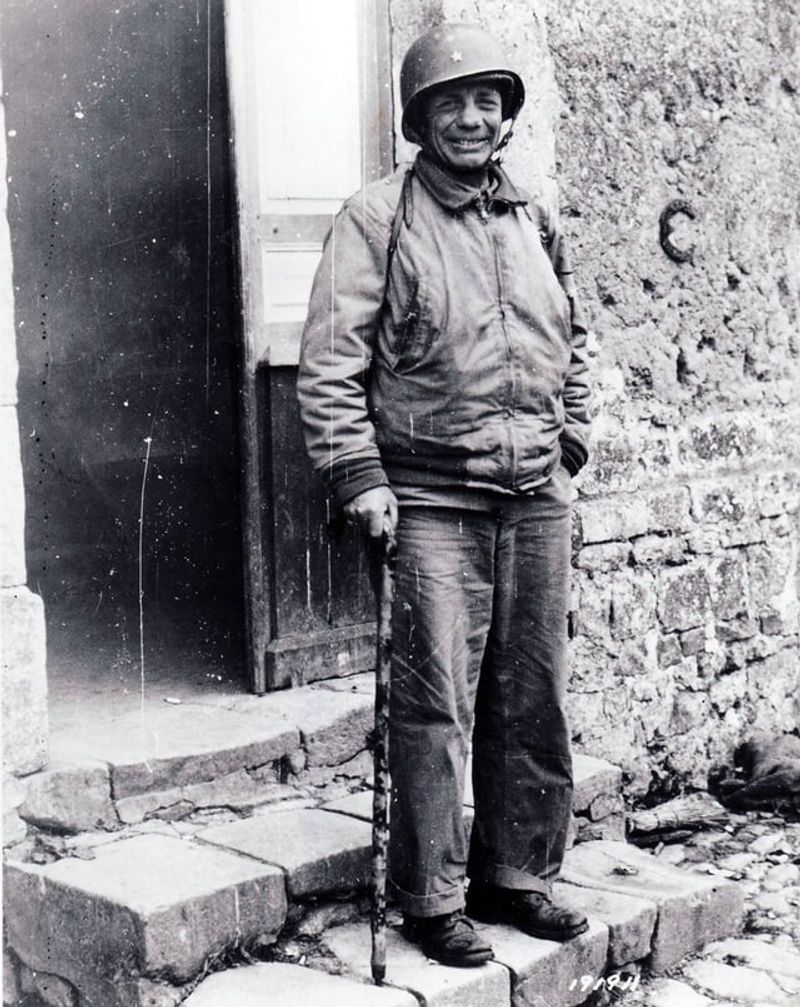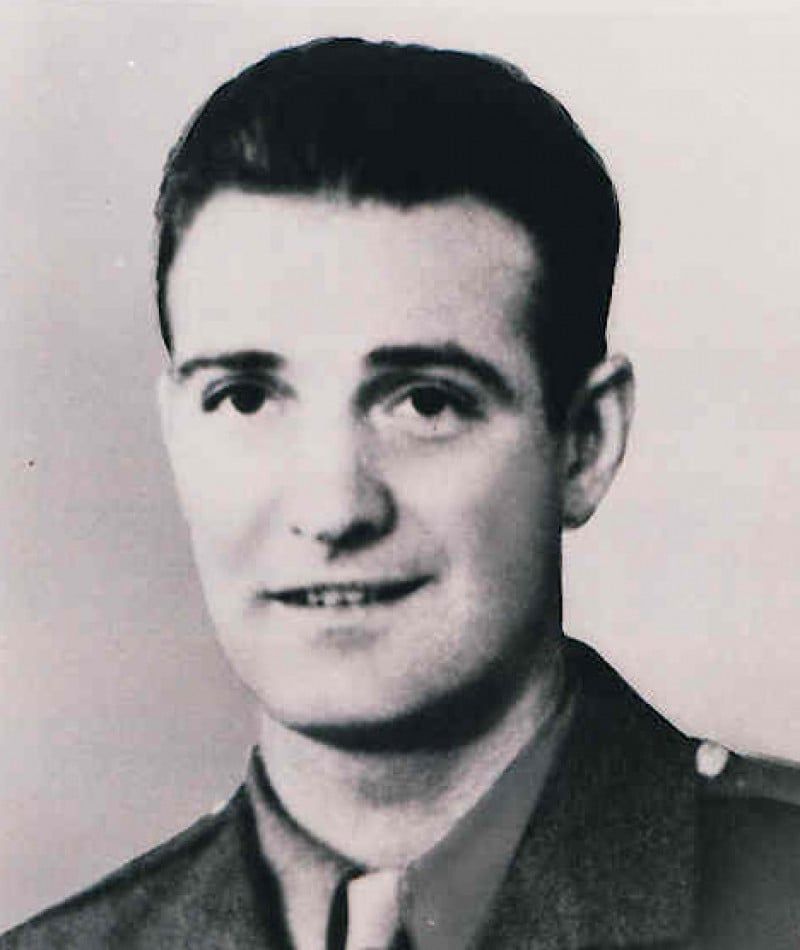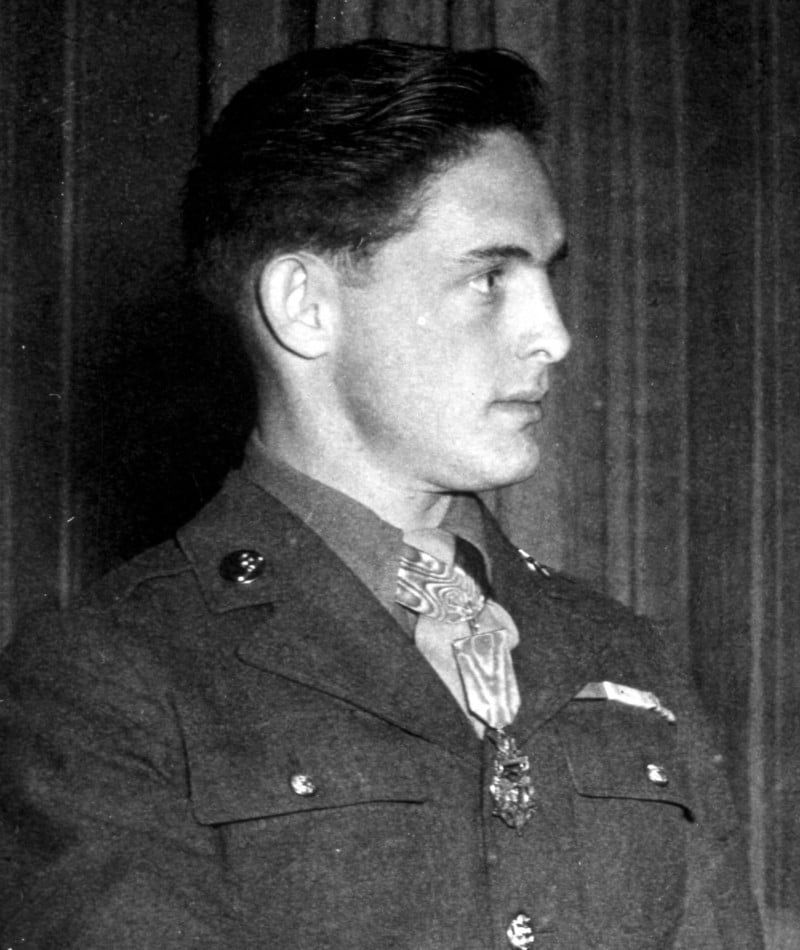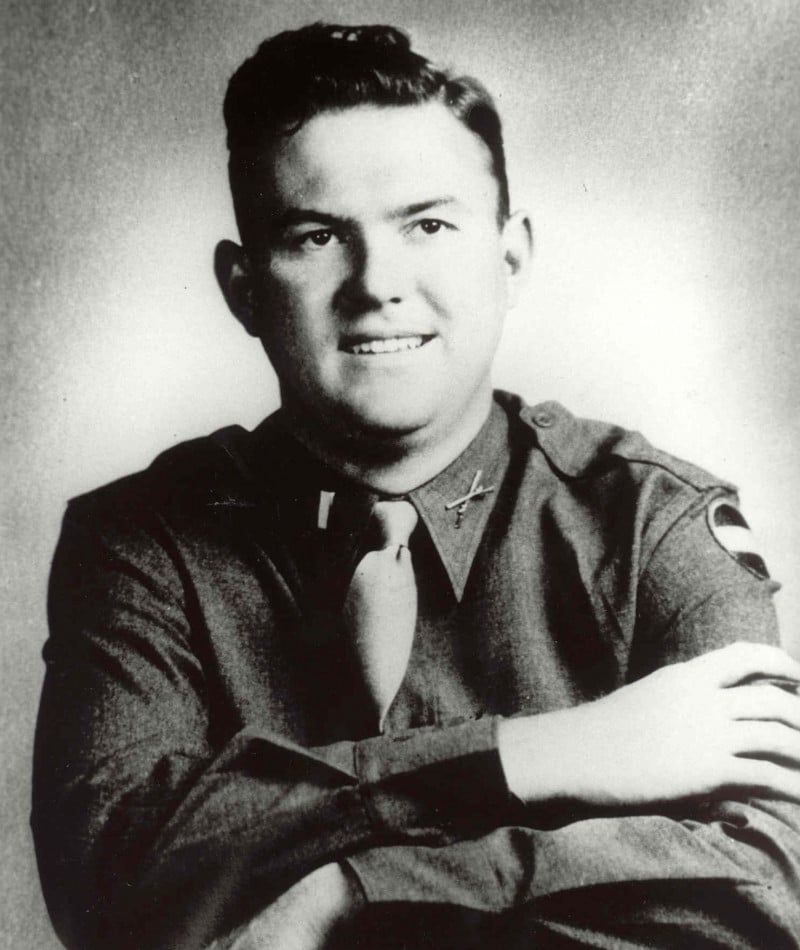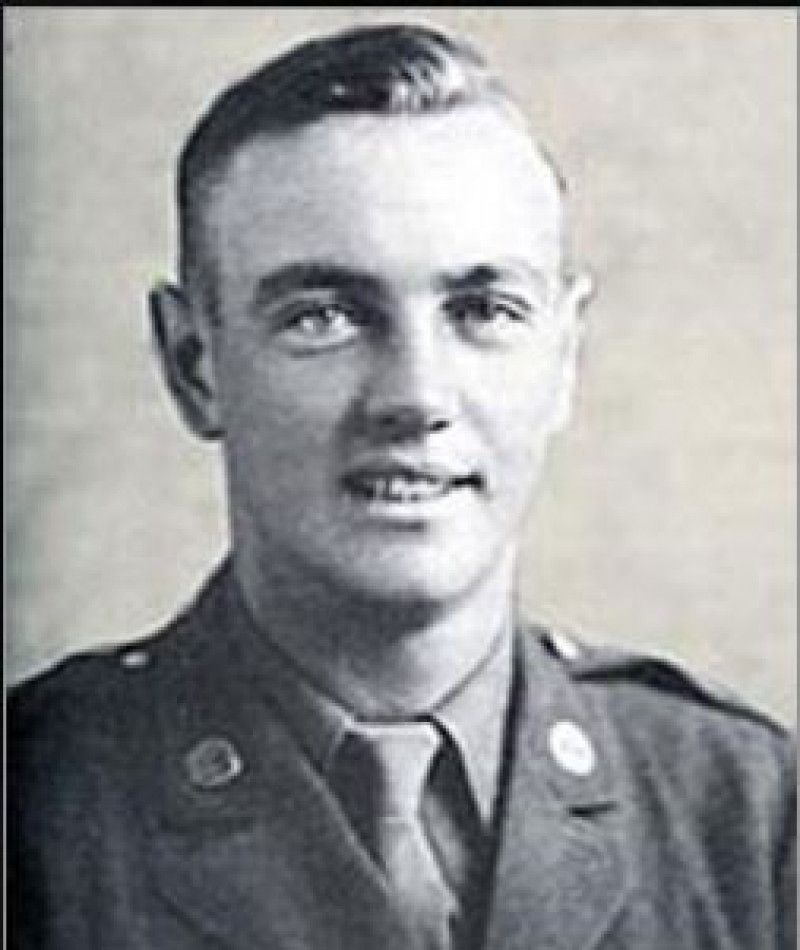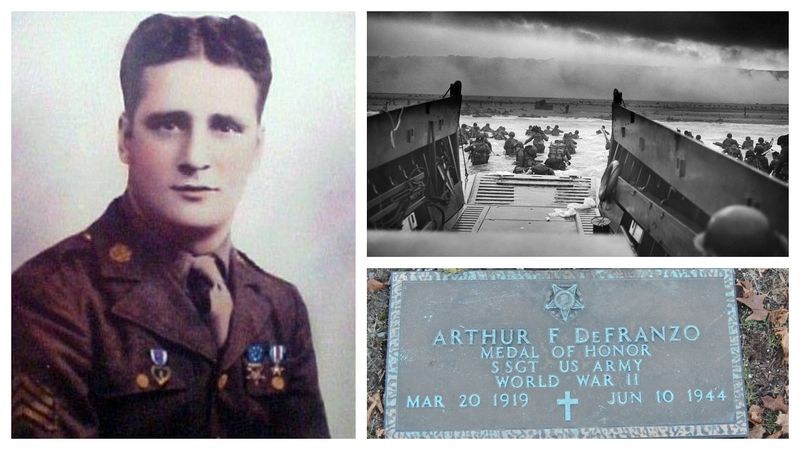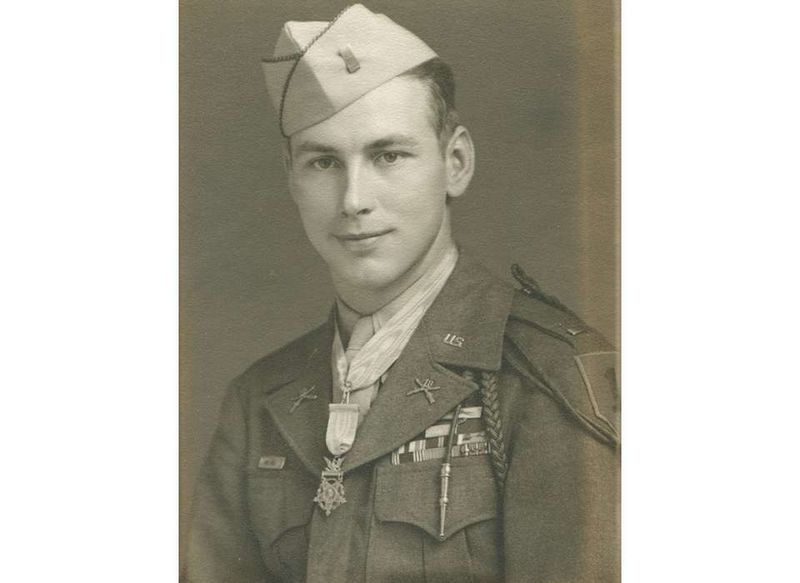On June 6, 1944, Allied forces stormed the beaches of Normandy in what would become the largest seaborne invasion in history. Among the brave soldiers who fought that day, a handful displayed such extraordinary courage that they were awarded America’s highest military decoration – the Medal of Honor. These ten men faced overwhelming odds, risking everything to secure victory on one of history’s most pivotal days.
1. Brigadier General Theodore Roosevelt Jr.
At 56 years old, Theodore Roosevelt Jr. was the oldest man to land on D-Day and the only general in the first wave at Utah Beach. When landing craft deposited troops a mile off course, Roosevelt famously declared, “We’ll start the war from right here!” and personally led confused soldiers inland. Despite walking with a cane and suffering from heart problems, he calmly directed traffic under enemy fire, reorganizing scattered units into an effective fighting force. His leadership transformed a potential disaster into a successful beachhead. As the son of President Theodore Roosevelt and father to Captain Quentin Roosevelt II (who landed at Omaha Beach), his bravery continued a family legacy of service. Roosevelt died of a heart attack one month after D-Day.
2. Technician Fifth Grade John J. Pinder Jr.
Radio communications proved vital on D-Day, and John Pinder embodied selfless dedication to maintaining these crucial links. Wading ashore at Omaha Beach amid devastating German fire, he was immediately wounded but refused evacuation. Blood soaking his uniform, Pinder repeatedly returned to the water to retrieve essential radio equipment. Each journey exposed him to withering machine gun and artillery barrages, yet he persisted through multiple wounds. Fellow soldiers watched in awe as this communications specialist, already fatally injured, focused solely on establishing contact with supporting forces. Pinder finally collapsed after ensuring functioning communications were established, sacrificing his life so others could coordinate the desperate battle unfolding around them.
3. Private Carlton W. Barrett
Standing just five feet four inches tall, Carlton Barrett proved that heroism knows no physical dimensions. While many soldiers sought cover from the murderous fire sweeping Omaha Beach, Barrett repeatedly exposed himself to danger to save others. Ignoring his own safety, he waded into the bullet-torn surf to pull drowning comrades to shore. German machine guns trained on the water’s edge made each rescue attempt a near-suicide mission, yet Barrett continued throughout the morning. Later, he made countless trips across open terrain to deliver vital ammunition to pinned-down units. His small stature, darting between obstacles while shells exploded around him, inspired others to similar acts of courage during the darkest hours of the invasion.
4. First Lieutenant Jimmie W. Monteith Jr.
Chaos reigned on Omaha Beach when Jimmie Monteith’s leadership transformed a stalled advance into forward momentum. Finding his men pinned down by concentrated German fire, he personally guided tanks through minefields, standing exposed on the beach to direct their movements. With armored support established, Monteith organized infantry assaults against the fortified seawall. He moved constantly between scattered groups, rallying demoralized men and establishing firing positions that gradually secured a foothold. When German counterattacks threatened this hard-won ground, Monteith organized a defensive perimeter. He fell while moving between positions, encouraging his men until the very end. His tactical acumen and personal courage turned potential defeat into the beginnings of victory on history’s bloodiest beach.
5. Private First Class Charles N. DeGlopper
The inland battles following D-Day proved equally desperate, as demonstrated by Charles DeGlopper’s stand near the La Fière bridge. When his unit became surrounded during the push to secure crucial crossings, DeGlopper made an extraordinary decision. Standing fully exposed in a roadway, the 22-year-old soldier provided covering fire with his Browning Automatic Rifle while his comrades withdrew to safety. German troops concentrated their fire on this lone American defiantly holding his ground. Despite multiple wounds, DeGlopper continued firing until he finally collapsed. His sacrifice allowed his entire unit to escape and regroup. The young paratrooper from Grand Island, New York, now stands among the pantheon of American heroes who gave everything when circumstances demanded extraordinary courage.
6. Staff Sergeant Arthur F. DeFranzo
Arthur DeFranzo’s journey through D-Day exemplified leadership under catastrophic conditions. When his platoon encountered intense machine gun fire inland from Omaha Beach, DeFranzo charged forward alone to draw enemy attention. Wounded in this initial assault, he refused medical aid and continued advancing. Spotting another machine gun nest targeting his men, DeFranzo again rushed forward, eliminating the position despite receiving additional severe wounds. His men watched in disbelief as their sergeant, now barely able to stand, continued organizing their advance. “Keep moving!” he shouted, directing fire until he finally collapsed from blood loss. DeFranzo’s relentless determination to protect his men, even at the cost of his own survival, epitomized the selfless leadership that ultimately secured victory in Normandy.
7. Second Lieutenant Walter D. Ehlers
Walter Ehlers carried an additional burden on D-Day – his brother Roland was also fighting in Normandy but would not survive the campaign. Perhaps this family connection fueled Walter’s extraordinary courage as he led his men off Omaha Beach and into the hedgerow country. On June 9, Ehlers personally silenced multiple German positions, destroying a mortar team and eliminating several machine gun nests that had halted the American advance. When wounded the next day, he insisted that medics treat others first. Unlike many Medal of Honor recipients, Ehlers survived the war and lived until 2014. He spent decades speaking about his experiences, always emphasizing that the real heroes were those who never returned home. His humility matched his battlefield bravery in equal measure.
8. Private Joe R. Hastings
The hedgerow battles following D-Day required men willing to take extraordinary risks. Joe Hastings embodied this spirit during fierce fighting near Drabenderhohe, Germany, in April 1945. Though landing at Normandy with the 1st Infantry Division, Hastings’ Medal of Honor action came later in the war. After watching his comrades fall to a concealed enemy position, he single-handedly attacked through withering fire, armed only with his M1 rifle and grenades. Hastings systematically eliminated an entire German strongpoint, killing multiple defenders and capturing several others. His lone assault broke a stalemate that had cost numerous American lives. Though he survived D-Day’s carnage, Hastings was killed just weeks before the war ended, having fought from Normandy’s beaches to Germany’s heartland.
9. First Sergeant Leonard A. Funk Jr.
Leonard Funk’s parachute descent into Normandy began an extraordinary combat journey. Though his Medal of Honor came for later actions during the Battle of the Bulge, his D-Day experience showcased remarkable composure under extreme conditions. Landing miles from his objective, Funk gathered scattered paratroopers into an effective fighting force. Moving through enemy territory, his improvised unit disrupted German communications and destroyed key facilities, despite being vastly outnumbered. Standing just 5’5″, Funk’s physical stature belied his outsized courage. Throughout the war, he demonstrated an uncanny ability to function effectively in chaos. By war’s end, he had become one of the most decorated paratroopers in American history, with his D-Day performance setting the stage for later heroics that would earn him America’s highest military honor.
10. Lieutenant Colonel Robert G. Cole
Robert Cole’s D-Day began with a harrowing nighttime parachute jump behind enemy lines. Though his Medal of Honor came for actions on June 11, his leadership during the initial invasion proved equally critical to American success. When scattered drops left the 101st Airborne Division fragmented, Cole quickly organized effective resistance. Moving between isolated groups, he established defensive positions that protected vital crossroads despite constant German attacks. Cole’s famous bayonet charge near Carentan broke a crucial German defensive line. Leading his men across open ground with fixed bayonets, he secured a victory that connected the Utah and Omaha beachheads. Tragically, Cole was killed by a sniper in Holland before learning he had earned the Medal of Honor, having survived D-Day only to fall during Operation Market Garden.
